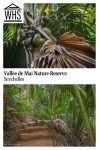Vallée de Mai Nature Reserve
By Cindy Carlsson
What is the Vallée de Mai Nature Reserve?
The Vallée de Mai Nature Reserve is a tropical palm forest on the Indian Ocean island of Praslin in the Seychelles. Largely unchanged since prehistoric times, this forest is home to palm trees, birds, amphibians, and various other creatures found only in the Seychelles, with some found only on Praslin. Coco de mer palms and black parrots are the best-known of these endemic species, but there are more.
Disclosure: This article contains affiliate links. Making a purchase through an affiliate link will mean a small commission for this website. This will not affect your price. Privacy policy.
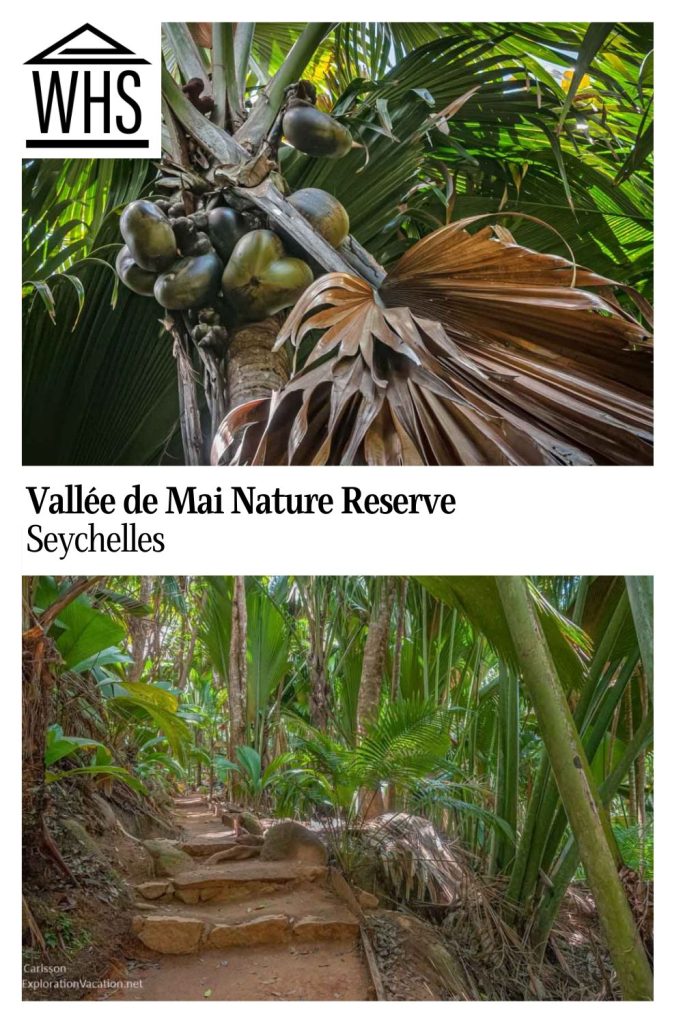
Why is the Vallée de Mai a UNESCO World Heritage site?
While recognized for its scenic beauty, the Vallée de Mai is more important as an extremely rare example of a palm forest that resembles its primeval state. It is also home to the world’s largest concentration of ancient coco de mer palms.
UNESCO explains: “Shaped by geological and biological processes that took place millions of years ago, the property is an outstanding example of an earlier and major stage in the evolutionary history of the world’s flora. Its ecology is dominated by endemic palms, and especially by the coco-de-mer, famous for its distinctively large double nut containing the largest seed in the plant kingdom. The Vallée de Mai constitutes a living laboratory, illustrating of what other tropical areas would have been before the advent of more advanced plant families.”
While the dominant trees are the coco de mer palms, there are actually five endemic species of palms within the Vallée de Mai. It’s the only place in the Seychelles where all six species coexist. Such a pristine forest also supports a unique ecosystem, including a wide range of other endemic species of birds, amphibians, fish and invertebrates.
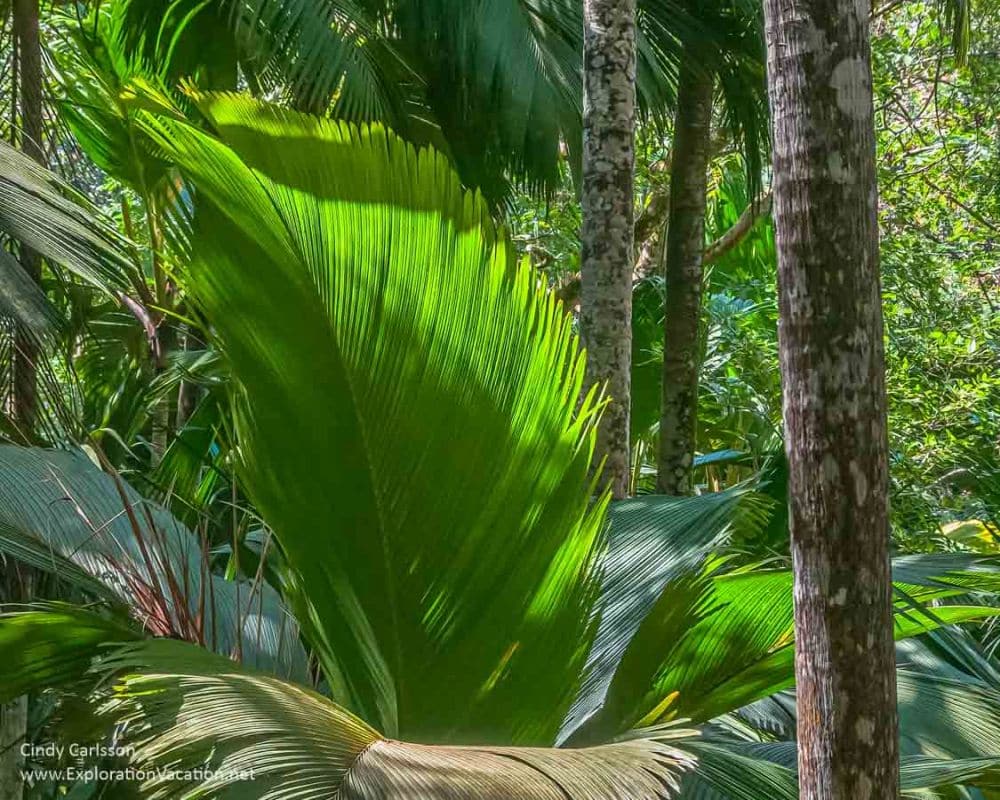
What can you expect on a visit to the Vallée de Mai?
I visited the Vallée de Mai as a stop on a sailing trip, so I was with a small group for a fully-guided tour of the UNESCO site. However, it’s easy to visit without a guide.
We started at the visitor center, where our very informative guide explained the coco de mer palm’s botany, the lore surrounding it, the history of the park, and actions to save this rare ecosystem. We got to lift the surprisingly heavy coco de mer seeds and closely examine other parts of the plant. (The giant, rather suggestively shaped seeds of the Lodoicea – coco de mer or sea coconut – can float long distances. They were once thought to grow on the bottom of the sea. And, even after the source of these seeds was found in 1743, the palm’s unusual biology led to all sorts of wild myths.)
From the visitor center we headed down a path through the palm-filled jungle. We stopped regularly when our guide saw a plant, animal, or bug he thought we should know about. And we frequently stopped to listen to bird calls and try to spot the bird making them. We heard black parrots, but didn’t get a decent look at any. On the other hand, we did see other birds, skinks, and geckos.
The palm forest is interesting. And it’s a lovely, shady spot to hike on a sunny day, even if plants and wildlife don’t particularly interest you. You can see more about my trip to the Vallée de Mai here.
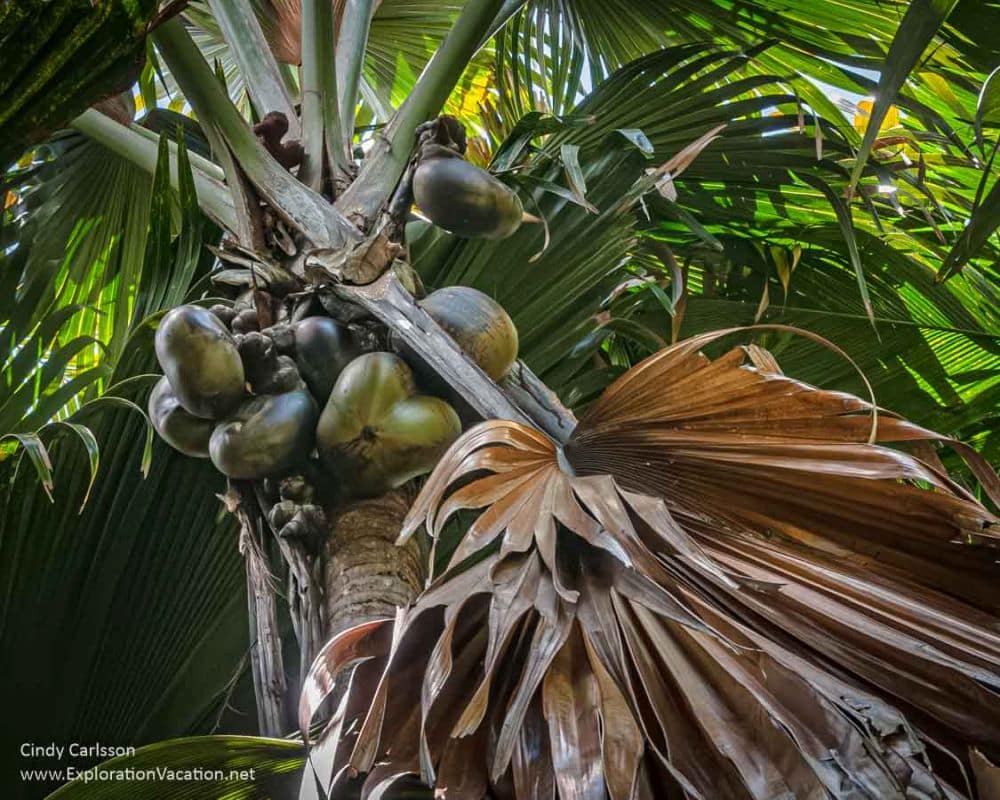
Is the Vallée de Mai worth visiting?
The Seychelles aren’t particularly close to anywhere. So, unless you are really, really into rare birds or plants, it’s probably not worth going there just to see the Vallée de Mai’s unique palm forest. However, the Seychelles are fabulous for sailing trips and beach vacations. If you are in the islands anyway, this UNESCO World Heritage site is easy to add to your itinerary and very worth visiting. There really is no other place like it!
Visitors who don’t have any particular interest in plants or wildlife can take an enjoyable hike and get a feel for the place in an hour.
However, the more time you spend looking, the more you will see, as both rare plants and wildlife easily hide in plain sight amid the greenery. Visitors who are interested in plants, wildlife, or a longer hike should plan to spend at least a couple of hours.
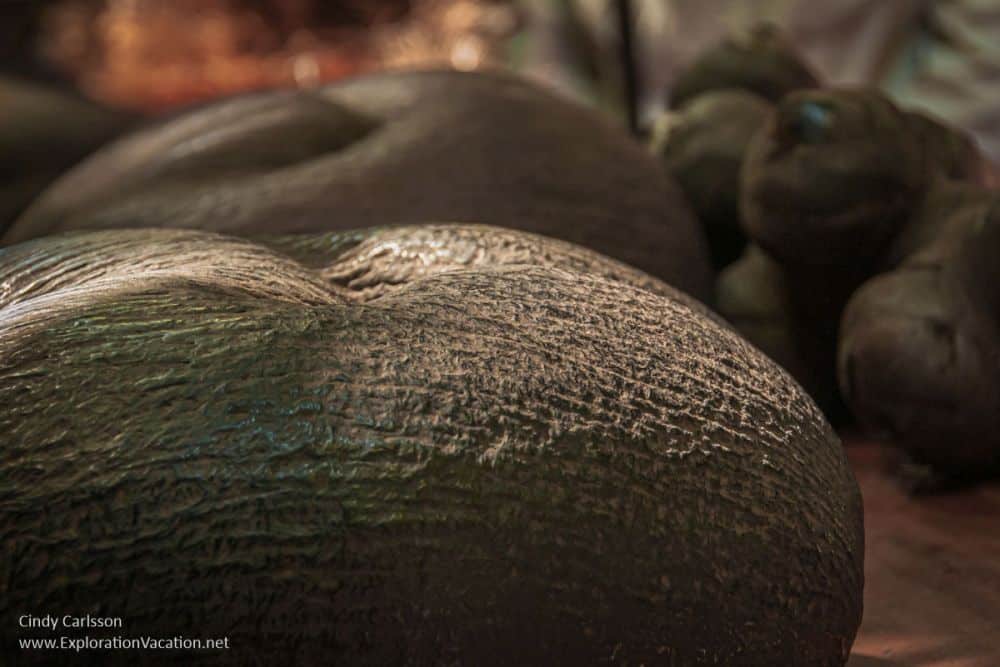
Tips for visiting Vallée de Mai Nature Reserve
Trail maps are available and you can tour the reserve without a guide. However, guided tours not only provide valuable background on the reserve and its lifeforms, but also point out plants and animals of note as you go. That makes it much more likely you will actually see a few of the area’s rare endemic species. Tours can be booked in advance but are usually also available on arrival. Free introductory tours are offered twice a day. Private guided tours can be booked through the reserve in advance or (usually) on arrival. A brief guided tour followed by more time exploring on your own is a good combination for most visitors.
Try this half-day small-group tour or this full-day small-group tour.
Trails are not particularly long, but vary in difficulty. The one I was on had steps to get up and down slopes. That isn’t true of all trails. And only a very small section of trail is wheelchair accessible.
Especially during the rainy season, trails can be very wet and muddy. Even if it hasn’t been raining, sturdy closed-toe shoes will make walking much easier.

Information, the only restrooms, and small gift and snack shops are located just outside the entrance to the reserve.
Praslin is lovely, but if you are looking for a little more to do, stay next door on La Digue and take the ferry over to Praslin to visit this World Heritage site as a day trip. It’s only a 15-minute ferry ride between the islands.
The Aldabra Atoll is the only other UNESCO site in the Seychelles. However, this is a VERY remote atoll. (It’s closer to Madagascar and the African mainland than the rest of the Seychelles.) It has strict restrictions on tourism, with high fees for the few visitors granted permission to visit. A few expedition cruises stop here, but few others.
(If primeval forests interest you, also read about the Gondwana Rainforests of Australia, the Bwindi Impenetrable National Park in Uganda, and the Socotra Archipelago in Yemen.)
Where is the Vallée de Mai?
The Vallée de Mai Nature Reserve is located within Praslin National Park on Praslin Island in the Seychelles.
The Seychelles is an island chain in the Indian Ocean. Its primary airport is on the island of Mahé. It’s about a 3-hour flight from Nairobi, 4½ from Dubai, or 5 from Doha. (Most North American and European flights connect through one of these hubs.) There are a few other direct flights, including weekly flights from Frankfurt and Zurich, but not many.
Praslin is a 20-minute flight or an hour’s ferry trip from Mahé Island.
Book your accommodations on Mahé Island or Praslin Island.
Once you are on Praslin, the UNESCO site is located in the interior highlands on the south end of the island. Two roads provide access to the south end of Praslin National Park and, from there, the Vallée de Mai. It’s well-marked on maps and road signs.
You can get to the Vallée de Mai via private automobile, bus, taxi, or an organized tour. It’s about a ten-minute drive from either Praslin’s airport or the ferry dock at Bai Sainte Anne. The bus will take slightly longer than private transport.
The entrance fee includes parking.
For more information about Vallée de Mai Nature Reserve, its opening hours and admission fees, see the Seychelles Island Foundation official website.
Have you been to the Vallée de Mai? If so, do you have any additional information or advice about this UNESCO World Heritage site? Please add your comments below!

